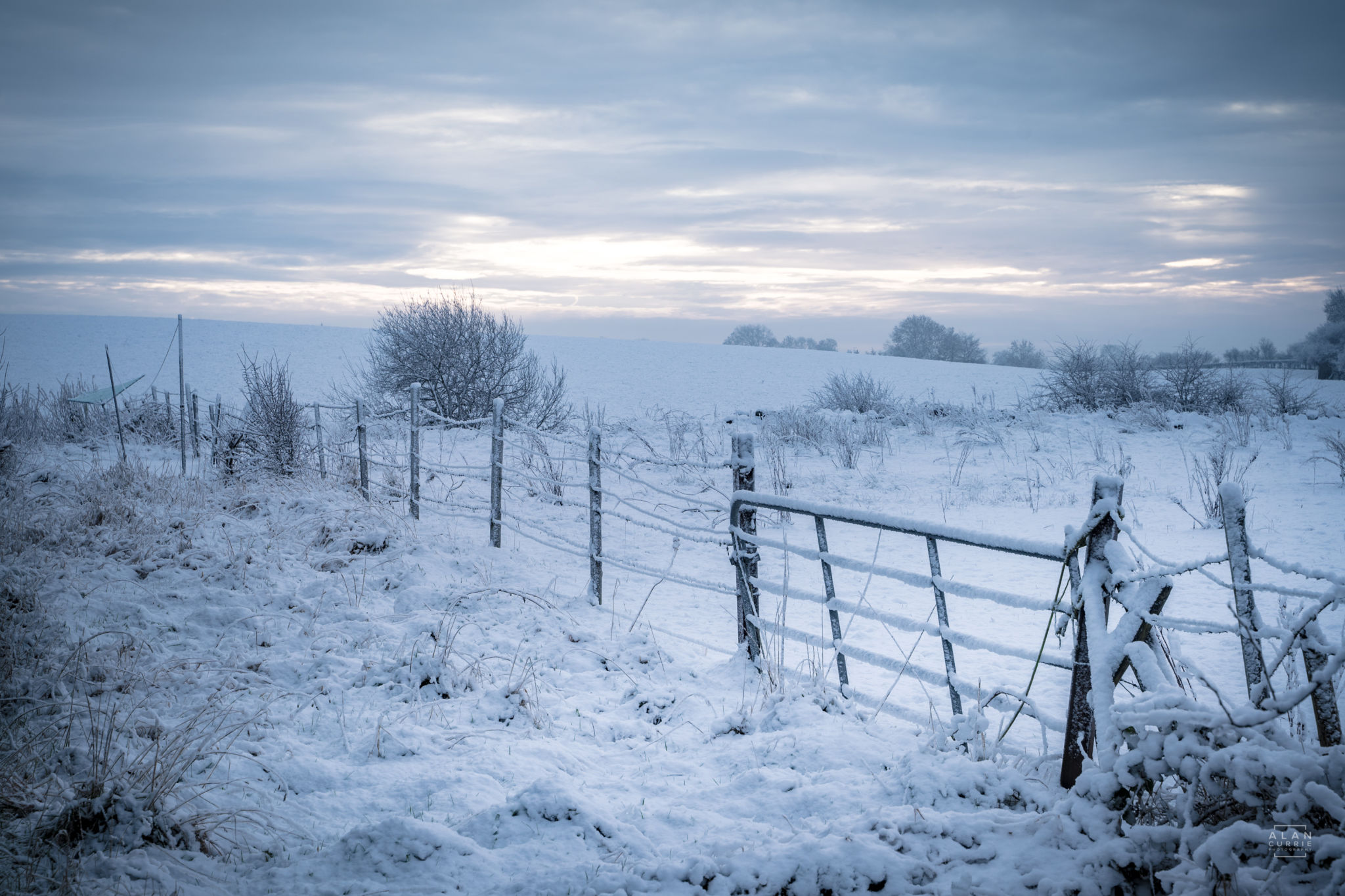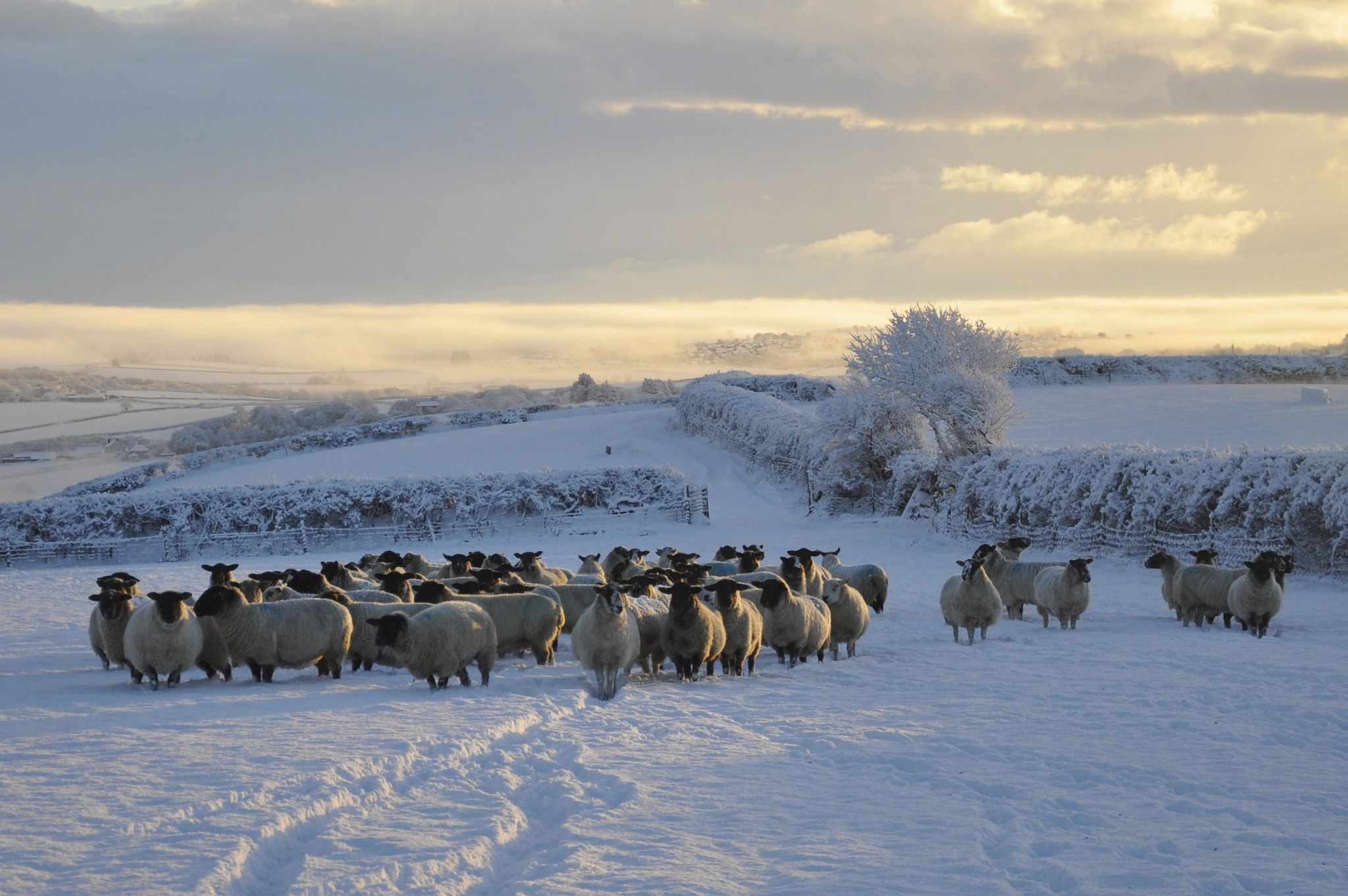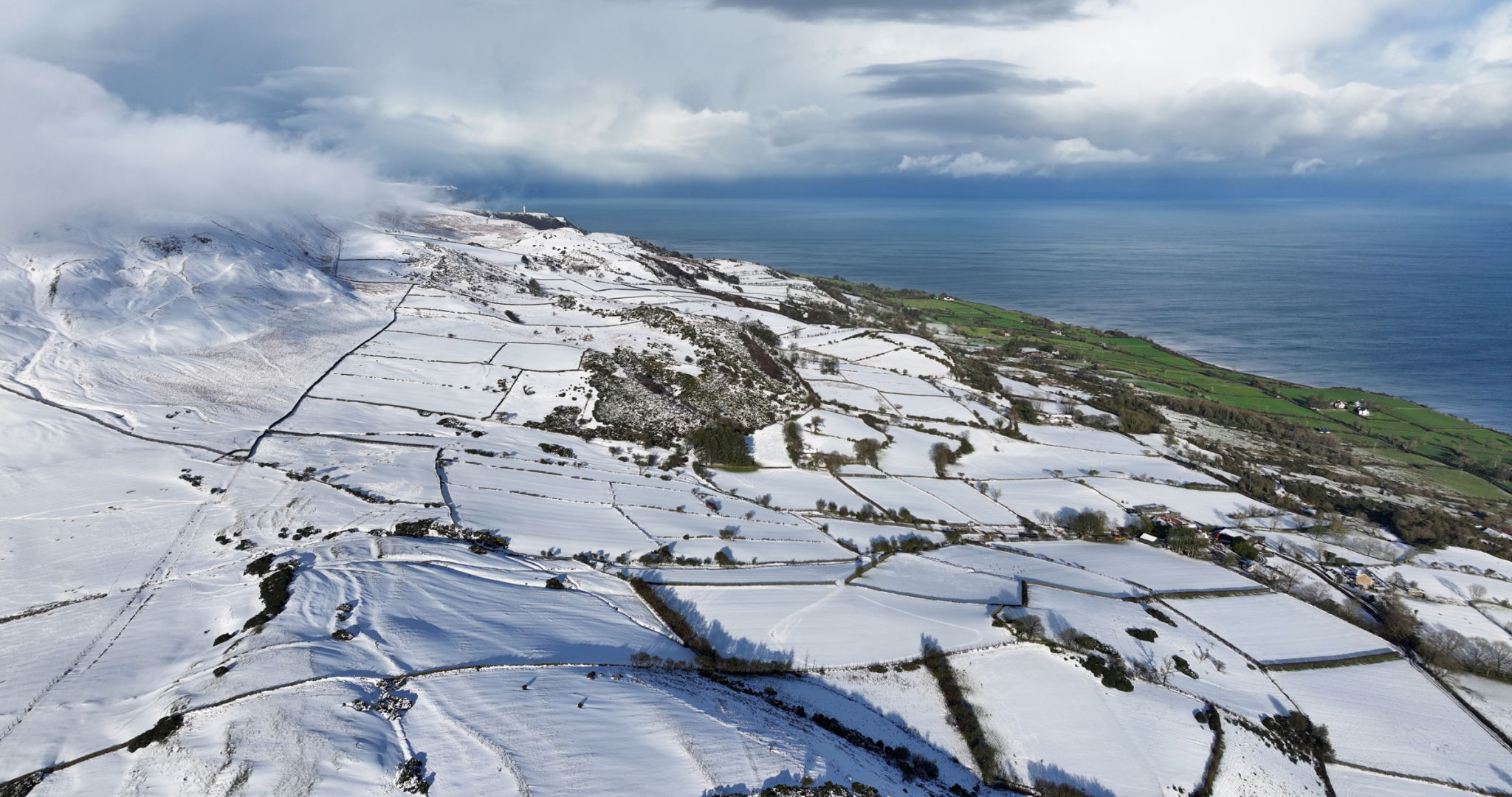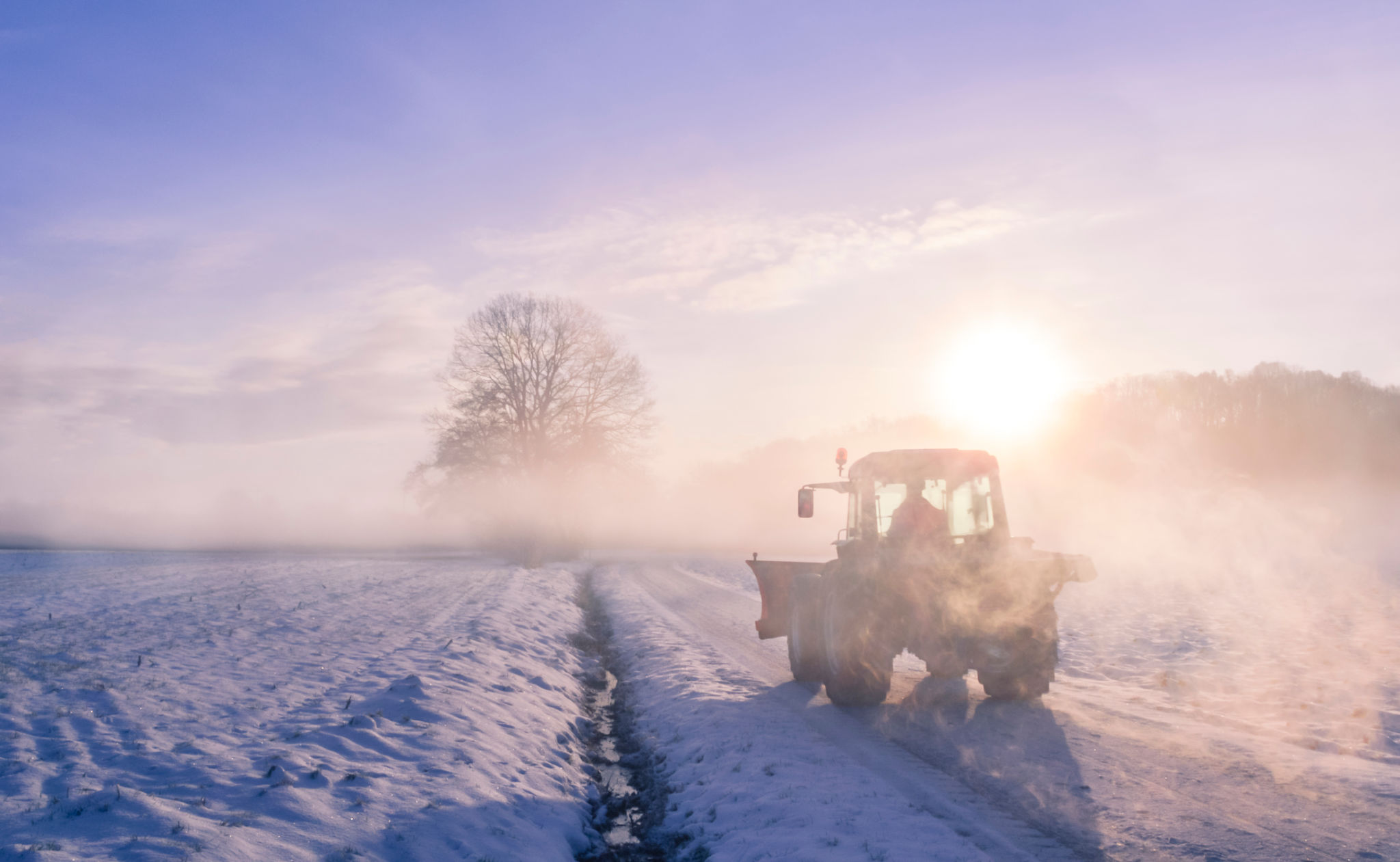Winter Farming: Essential Tips for Irish Farmers
Introduction
Ireland’s weather is famous for being unpredictable, but the recent freezing temperatures and snow have taken things up a notch. For farmers, this icy blast is more than an inconvenience – it’s a real challenge that demands quick thinking and careful planning.
With agriculture contributing around 7.5% of Ireland's GDP and employing over 164,000 people (CSO, 2022), protecting livestock, crops, and soil isn’t just about survival – it’s about sustaining livelihoods. A bit of preparation can make all the difference. Here are practical tips, backed by data and proven methods, to help you manage your farm during this cold snap.

Looking After Your Animals: Keeping Them Warm, Fed, and Happy
Livestock are particularly vulnerable to cold stress, a condition where their bodies use more energy to stay warm, leaving less energy available for growth, milk production, or other vital functions. This can reduce productivity, increase susceptibility to illness, and in severe cases, even lead to fatalities. For example, research shows that beef cattle require 15-20% more feed energy during cold weather just to maintain their body weight.
With the right approach, you can help your animals stay healthy, comfortable, and productive during this challenging weather. Here’s what you can do:
Give Them Shelter
A well-maintained, dry, and draught-free shelter is essential. Exposure to biting winds and damp conditions increases heat loss, making it harder for animals to stay warm. Studies show that proper housing can reduce heat loss by up to 30%, which not only improves animal welfare but can also lower the additional feed costs associated with cold stress. Check barns and sheds for any cracks, leaks, or gaps where wind or snow might enter, and repair them promptly. Temporary windbreaks, such as bales of hay or tarpaulins, can also be useful for outdoor animals.
Cosy Bedding
Adding extra straw, wood shavings, or other bedding materials can make a big difference in helping animals conserve body heat. Insulation from the cold ground is particularly important for younger livestock, such as calves and lambs, who are less able to regulate their body temperature. Cold stress in young animals can stunt growth and weaken their immune systems, making bedding an investment in their long-term health. Regularly check and refresh bedding to ensure it stays dry and clean, as damp materials can have the opposite effect.
Water That Won’t Freeze
Access to clean, unfrozen water is non-negotiable for livestock health. Frozen water troughs can quickly lead to dehydration, which in turn reduces feed intake and weakens animals’ ability to cope with the cold. Regularly check troughs for ice and break it as needed. For a more efficient solution, consider using trough heaters or insulated water systems. Portable heaters can be powered by solar energy or other sustainable sources to minimise additional energy costs.
More to Munch
Animals burn more calories to stay warm, so their energy requirements increase significantly during cold weather. To help them meet these demands, increase their feed rations. High-energy feeds, such as silage, grains, or concentrates, are particularly effective in maintaining body condition. For grazing animals, ensure that snow or ice isn’t obstructing access to pasture, and supplement their diet if necessary. Monitor their condition closely – if you notice weight loss or lethargy, it’s a sign they may need additional support.
Keep an Eye on Their Behaviour
Cold weather can make livestock more prone to illness, particularly respiratory issues caused by damp, poorly ventilated shelters. Pay close attention to their behaviour – reduced movement, shivering, or huddling together excessively may indicate they’re struggling with the cold. Address any issues immediately, and consult a vet if necessary.
These steps will not only help your animals through the current freeze but also set them up for better health and productivity when the weather improves. After all, a warm, well-fed, and hydrated animal is a happy one!

Saving Your Crops: Fighting Frost and Snow
Frost and snow can wreak havoc on crops, particularly those still in the ground or nearing harvest. The “Beast from the East” in 2018 was a stark reminder of this, causing widespread damage to Irish farms and leaving crop losses estimated at €10 million. While we can’t control the weather, there are steps you can take to protect your crops and minimise the impact of severe conditions.
Cover Up
One of the simplest and most effective methods to protect crops is to use covers. Vulnerable crops, such as leafy greens, benefit greatly from the added insulation provided by fleece, tarpaulins, or geotextiles. These materials can raise the temperature around the crops by up to 5°C, which is often enough to prevent frost damage. Additionally, straw or mulch can be used as a natural protective layer for root vegetables like carrots or parsnips, shielding them from direct exposure to the cold. Ensure that covers are securely anchored to withstand strong winds that often accompany freezing weather.
Think About Drainage
When snow melts, it can leave fields waterlogged, creating a double threat to crops. Saturated soil can suffocate roots, damage soil structure, and lead to nutrient leaching, all of which can severely impact yields. Proper drainage is essential to manage this risk. Teagasc advises maintaining drainage ditches and ensuring they are free of debris before heavy snowfall or rain. Additionally, reducing field traffic during wet conditions can help prevent soil compaction, which can further exacerbate drainage issues. If drainage is an ongoing problem, consider investing in long-term solutions like tile drainage systems or improving field slope to facilitate runoff.
Plan for Next Time
Extreme weather events are becoming more frequent, making it vital to plan ahead for future cold spells. Choosing winter-resistant crop varieties, such as frost-hardy brassicas (e.g., kale, cabbage) or grains (e.g., winter wheat), can significantly reduce the risk of crop failure. These varieties are bred to tolerate lower temperatures and recover more effectively from frost. Diversifying your crop choices can also spread the risk, ensuring that not all your efforts hinge on a single type of crop.
Monitor and Adapt
Stay vigilant with weather forecasts and be ready to act quickly when frost is predicted. A proactive approach, such as covering crops or enhancing drainage, can save time and resources compared to reacting after damage occurs. If frost damage does happen, assess the extent carefully – some crops may recover with the right post-frost care, such as pruning or adding nutrient-rich fertilisers to support regrowth.
By taking these steps, you can reduce the likelihood of significant crop losses and better prepare for the challenges that freezing weather brings. Protecting your crops today will ensure a stronger and more resilient harvest tomorrow.

Caring for the Land: Preparing for the Freeze (and the Thaw)
Healthy soil is the foundation of every productive farm, but freezing weather can disrupt its delicate balance, affecting everything from water infiltration to nutrient retention. Ireland’s soils are already under pressure, with a 2022 report from the Irish Soil Management Institute revealing that 25% of the country’s agricultural soils are at risk of compaction. This makes proactive soil management essential, not only to prevent damage during cold weather but also to support recovery once temperatures rise.
Here’s how to protect and prepare your soil during the freeze and the thaw:
Go Easy on the Machinery
Driving heavy machinery over frozen or waterlogged fields can significantly worsen soil compaction, which restricts root growth, water infiltration, and nutrient absorption. Compacted soil can reduce crop yields by up to 15%, making it a costly mistake. During freezing weather, it’s best to minimise field traffic, especially with heavy equipment. If essential tasks require machinery, use designated pathways to limit widespread damage.
For fields prone to compaction, consider introducing long-term solutions like controlled traffic farming (CTF), which can reduce the compacted area in a field by up to 70%, ensuring healthier, more productive soil over time.
Cover Bare Soil
Exposed soil is highly vulnerable to erosion, nutrient leaching, and structural degradation during winter. Planting cover crops, such as rye, clover, or winter vetch, can shield the soil from these effects while also bringing additional benefits. For example, legumes like clover not only protect against erosion but also fix nitrogen in the soil, boosting fertility for the next growing season. Organic mulches, such as straw or wood chips, are another excellent option, particularly for smaller areas or orchards. They insulate the soil, prevent erosion, and help retain moisture when the weather warms up.
Be Ready for Recovery
When the thaw begins, the real work of recovery starts. Freezing and thawing cycles can alter soil structure and drain away essential nutrients. Once the ground has stabilised, conduct a soil test to assess pH, nutrient levels, and compaction. Based on the results, you may need to add organic matter, such as compost or well-rotted manure, to replenish lost nutrients and improve soil structure. Lime may also be required to correct pH imbalances caused by leaching.
Aerating compacted soil, either manually or with specialised equipment, can help restore its structure and promote healthy root growth. For severely degraded soils, incorporating green manure or planting deep-rooted cover crops in the following season can help rebuild its vitality over time.
Think Long Term
Freezing weather is a reminder of the importance of sustainable soil management practices. Techniques like no-till farming or reduced tillage can minimise soil disturbance and protect its structure year-round. Additionally, maintaining hedgerows and grassy field margins can act as natural barriers against erosion, especially in sloping fields.
By taking these steps, you not only protect your soil from the immediate challenges of freezing weather but also ensure it remains fertile, resilient, and ready to support your crops when spring arrives. Healthy soil is the backbone of sustainable farming – taking care of it today will yield benefits for years to come.

Turning Challenges into Opportunities
Winter weather is undeniably tough, but it’s also an opportunity to reassess and improve farming practices. Each cold snap highlights the vulnerabilities in traditional methods and opens the door to adopting innovative, sustainable approaches. As Ireland works towards the ambitious goals set out in the Climate Action Plan 2023, farmers are uniquely positioned to lead the way in building a more resilient and environmentally conscious agricultural sector.
Here are some practical ways to turn the challenges of winter weather into long-term opportunities:
Renewable Heating Solutions
Harnessing renewable energy isn’t just environmentally friendly – it can also reduce costs and improve efficiency. Solar panels and wind-powered systems are increasingly being used to heat water troughs, power ventilation systems, and warm barns. These technologies can lower energy bills by up to 40% in some cases, making them an attractive investment for farms of all sizes. Additionally, incorporating energy storage systems, such as batteries, ensures a steady supply of power even during overcast or low-wind days. By adopting renewable energy solutions, farmers can reduce their reliance on fossil fuels and contribute to Ireland’s transition to a low-carbon economy.
Resilient Farming Methods
Adopting resilient farming methods can help protect against the uncertainties of extreme weather. Techniques like rotational grazing, where livestock are moved between pastures to allow grass to recover, improve soil health and reduce the risk of overgrazing. Similarly, agroforestry, which integrates trees and shrubs into agricultural land, offers multiple benefits. Trees provide shelter for livestock, act as windbreaks, and sequester carbon, all while enhancing biodiversity. Diversifying crops and implementing mixed farming systems are also effective strategies to spread risk and boost overall farm resilience.
For example, adding deep-rooted cover crops can help stabilise soil and improve its ability to withstand both freezing and thawing cycles. These approaches not only safeguard productivity but also align with Ireland’s goals to reduce greenhouse gas emissions from agriculture.
Team Up
Winter weather often brings added workloads, such as clearing snow, breaking ice in troughs, or repairing damaged infrastructure. Collaborating with neighbouring farms can reduce the burden on individual farmers and foster a stronger sense of community. Sharing equipment, such as snowploughs or feed wagons, can significantly lower costs and improve efficiency. Labour-sharing agreements during busy periods, such as feeding livestock or maintaining shelters, can also ensure no farm is left struggling.
Knowledge-sharing is equally valuable – discussing best practices, pooling resources, or collectively exploring grants and funding opportunities can help all involved benefit from economies of scale. Farmer co-operatives, which are already a strong tradition in Ireland, can be a powerful platform for scaling up these collaborative efforts.

Conclusion
Snow and ice serve as a stark reminder of just how much farmers are at the mercy of the elements. Freezing weather can disrupt daily operations, put pressure on resources, and challenge even the most experienced farmers. However, with the right approach and a focus on proactive solutions, it’s possible not only to minimise damage but also to find opportunities for growth and improve the long-term sustainability of your farm.
Ireland’s agricultural sector has always demonstrated remarkable resilience, rising to meet challenges ranging from volatile markets to extreme weather events. This resilience is a testament to the strength, innovation, and adaptability of Irish farmers. By embracing sustainable practices and modern solutions, we can ensure that farms across the country continue to thrive in the face of changing climates and increasingly unpredictable conditions.
Whether you need help safeguarding your animals, protecting your crops, or planning for future challenges, remember you’re not alone. If you’re feeling overwhelmed or would like tailored advice to suit the unique needs of your land, animals, or crops, we’re here to help. At The Informed Farmer, we specialise in providing sustainable farming solutions designed for Ireland’s diverse and dynamic agricultural landscape.
Let’s weather the storm together – and build a brighter, more resilient future for Irish farming.
*By Anne Hayden MSc., Founder, The Informed Farmer Consultancy
